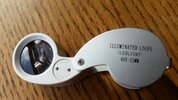I''ve been studying a tutorial about resistor values. I have a chart of the 9 main colours. Plus some understanding of the representations of the gold & silver rings. Also, 'the 4th ring' being a tolerence percentage ring.
Initiallly I was understanding that the 3 main rings for example would always be at one end, and anything else at the opposite end of the resistor. Then I came by a resistor that does not fit the pattern as explained. Basically it has a brown ring on each shoulder (end bits) and 3 standard rings in the centre.
Can someone enlighten me please?
Initiallly I was understanding that the 3 main rings for example would always be at one end, and anything else at the opposite end of the resistor. Then I came by a resistor that does not fit the pattern as explained. Basically it has a brown ring on each shoulder (end bits) and 3 standard rings in the centre.
Can someone enlighten me please?

